Introduction
The rapid evolution of technology in law enforcement is reshaping the landscape of modern policing, driven by the imperative for enhanced operational efficiency, data management, and public safety. From predictive analytics and body-worn cameras to advanced communication systems, these innovations are becoming integral to contemporary policing practices worldwide. Notable examples, such as the AI-based Crime Nabi system in Belo Horizonte and the widespread adoption of body-worn cameras in the United States, demonstrate the transformative impact of technology on surveillance, crime prevention, and accountability.
This article delves into the multifaceted implications of technology adoption in law enforcement. It explores rigorous research methodologies used to evaluate the effectiveness of these technologies, the profound impact on policing strategies, and the challenges faced during implementation. Ethical considerations are also examined, emphasizing the need for robust guidelines and community engagement to ensure that technological advancements do not compromise individual rights.
By assessing the effectiveness of PD counter technologies through comprehensive data analysis and real-world case studies, the article provides valuable insights into balancing innovation with ethical responsibility, ultimately enhancing public safety and trust in law enforcement.
Background on Law Enforcement Technology Adoption
The swift incorporation of innovations in law practices is changing the environment of policing, motivated by the demand for improved operational efficiency, data handling, and public safety. Technologies such as predictive analytics, body-worn cameras, and advanced communication systems are now central to modern policing practices. For instance, the municipal police force in belo Horizonte, Brazil, has implemented Crime Nabi, an AI-based system that predicts likely crimes, significantly enhancing their surveillance and crime prevention measures.
Body-worn cameras have become ubiquitous, with thousands of police departments across the United States adopting them to increase accountability and transparency. ‘As stated by Michael D. White from Arizona State University, much of the footage captured by these cameras is rarely examined, but the emergence of tools that automatically assess this footage is starting to alter that, with the goal of enhancing public trust in law officials.’.
Moreover, companies like Polis Solutions are leveraging AI to evaluate the behavior of both officers and citizens during encounters, using body camera footage to provide insights into emotional intensity and other factors. Jonathan Wender, CEO of Polis Solutions, emphasizes the importance of mining this vast data source to enhance police-community interactions.
Virtual reality training systems, such as Wrap Reality™, offer immersive training scenarios that help officers de-escalate conflicts and apply appropriate use-of-force measures, leading to better performance in the field. These innovations, combined with meticulous evidence management solutions like Wrap Intrensic, ensure transparency and build trust in law agencies and the justice system.
As the acceptance of these cutting-edge innovations progresses, they pledge to transform law enforcement by offering instruments for enhanced decision-making, optimized resource distribution, and ultimately, safer neighborhoods.
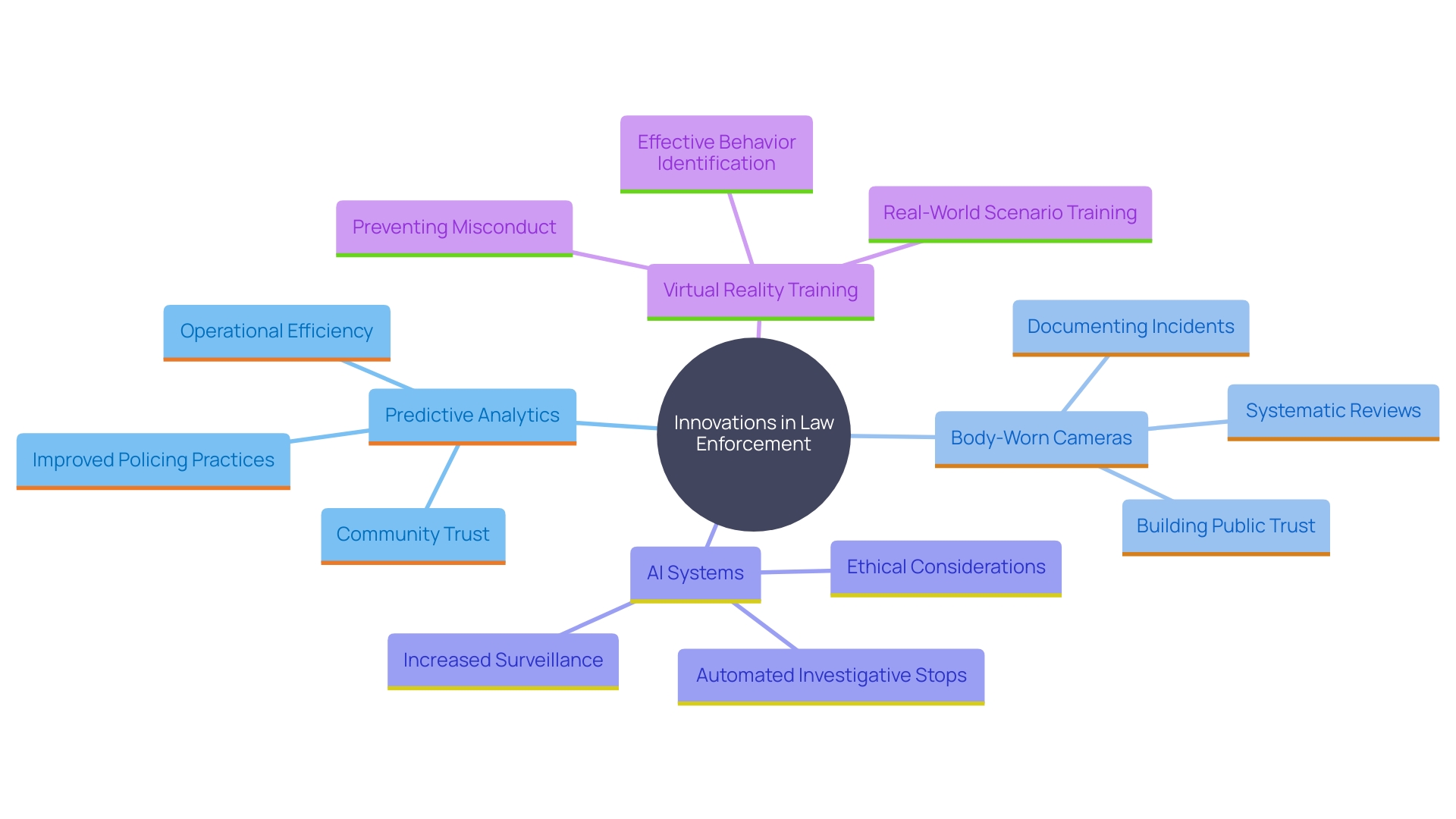
Case Study Methodology
This case study uses a rigorous research methodology, incorporating randomized controlled trials (RCTs), in-depth interviews, direct observation, and comprehensive data analysis. The study involves three police departments: the Casa Grande Police Department, the Apache Junction Police Department, and the Arizona Department of Public Safety. By collaborating with law enforcement personnel, service providers, and community stakeholders, the research aims to assess the viability and effectiveness of PD counter solutions.
The RCTs carried out at the smaller agencies have been in progress for several months, concentrating on whether the innovation is accepted by officers and supervisors and its potential to affect their behavior in the field. Interviews and surveys with officers, supervisors, and leadership offer understanding into the system’s operational impact and user experience. Furthermore, a key informant approach involving professionals from Texas and New Jersey offers additional perspectives on the efficacy and implementation challenges of similar protective measures.
The information gathered will offer an extensive perspective on the operational impact, user experience, and public perceptions concerning these innovations. The ultimate goal is to enhance community trust through increased accountability and transparency, as evidenced by the mixed results of body-worn cameras and their impact on police-community relations. The study will inform decision-makers on whether to sustain, modify, or scale up such initiatives, contributing to the broader effort to improve public safety and police practices.
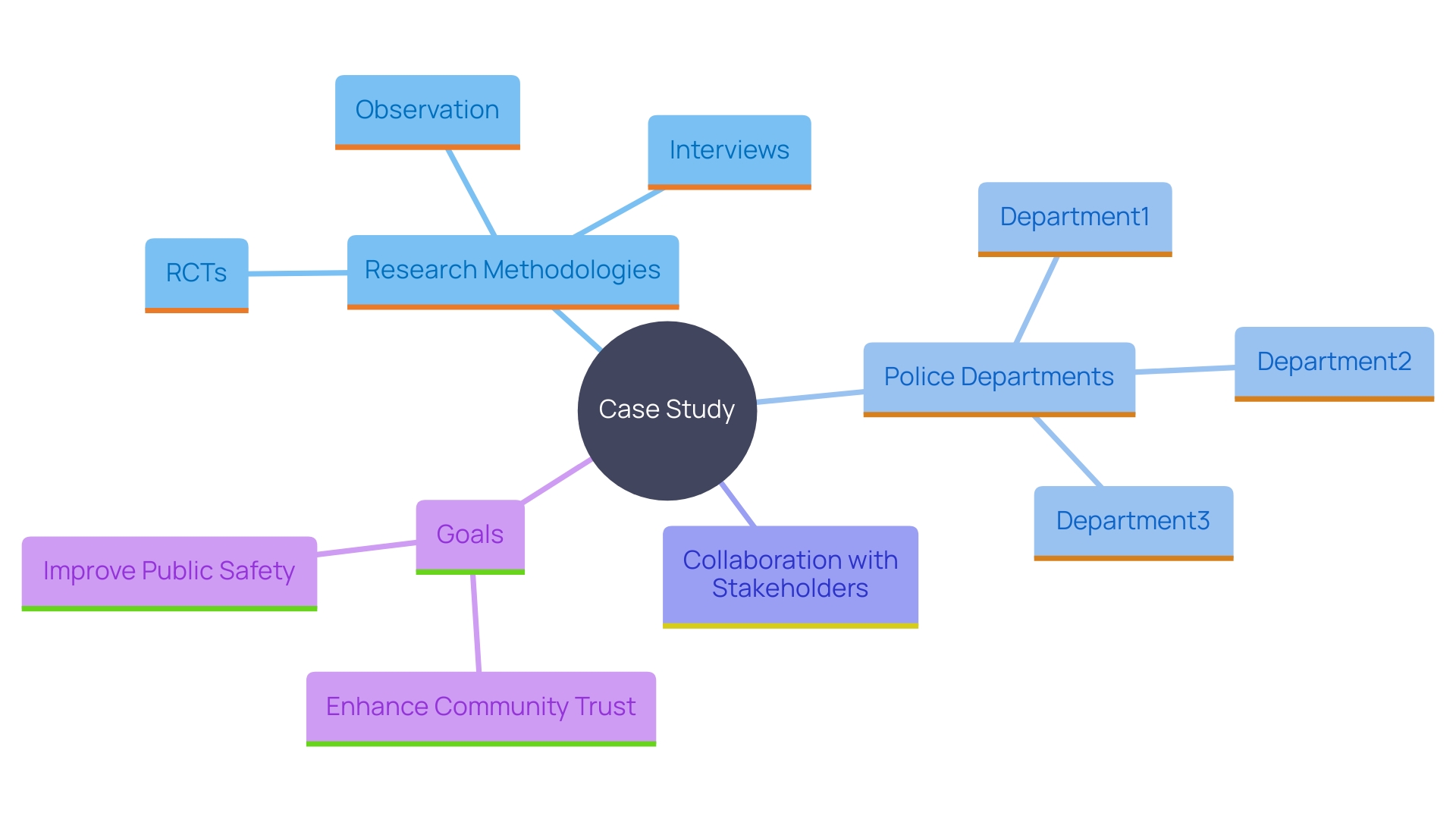
Impact of Technology on Policing Strategies
The incorporation of PD counter methods has transformed conventional policing approaches. Real-time crime mapping and data analytics empower officers to pinpoint crime hotspots and allocate resources with precision. This proactive method significantly enhances situational awareness, allowing law agencies to swiftly tackle emerging threats. The New York Police Department’s Real-Time Crime Center, established in 2005, stands as a pioneering example. With a network of several thousand integrated public and private cameras, it serves 77 precincts and supports 36,000 officers. This initiative, motivated by the 9/11 attacks, highlights the transformative impact of innovation in policing. Case studies from different regions, including New York’s fusion centers, illustrate how these innovations have resulted in significant decreases in crime rates and encouraged better relations among residents. As NYPD’s efforts demonstrate, incorporating the appropriate tools and expertise can transform policing, ensuring enhanced safety and cooperation between law enforcement and the community.
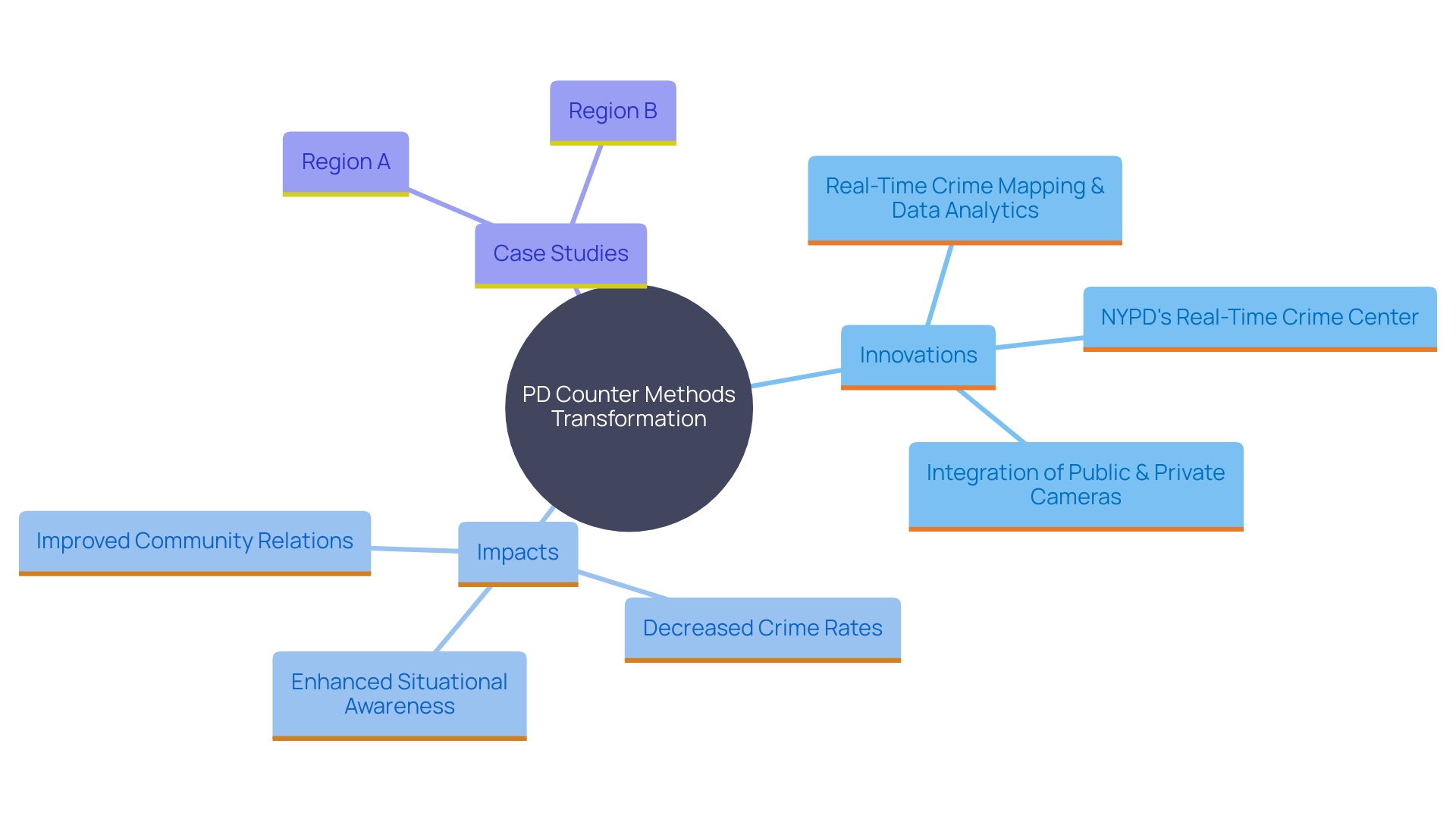
Challenges in Implementing PD Counter Technologies
Implementing PD counter methods encounters several challenges that necessitate strategic planning and stakeholder involvement for successful deployment. Budget constraints often limit the capacity to adopt new advancements, while resistance to change among personnel can slow down integration efforts. Adequate training is crucial to guarantee the efficient application of these tools, but it can be expensive and require a significant amount of time.
Data privacy and ethical considerations also play a significant role in shaping public trust. For instance, the controversy surrounding the ShotSpotter system in Chicago highlights how concerns over accuracy, expense, and potential biases can lead to public skepticism and operational challenges. Regardless of these challenges, supporters contend that such innovations can assist law enforcement in addressing gun violence more efficiently, as demonstrated by the Manchester incident where ShotSpotter notifications resulted in the capture of a person with several firearms.
To address these challenges, it’s crucial to establish robust governance frameworks and best practices. This includes establishing technical, procedural, and disclosure standards for systems like facial recognition, which should be guided by rigorous testing and evaluation to enhance accuracy and reduce demographic differentials. Furthermore, federal privacy regulations related to these advancements can help reduce risks and safeguard civil liberties.
Ultimately, balancing innovation with ethical responsibility and transparency is essential to maintaining public trust and ensuring the effective use of PD counter tools in law policing.
Ethical Considerations in Using Advanced Technologies
The incorporation of sophisticated innovations in policing presents considerable ethical dilemmas. Issues surrounding surveillance, data ownership, and biases in algorithmic decision-making are at the forefront. Law enforcement agencies must establish robust ethical guidelines and accountability measures to ensure that advancements enhance public safety without compromising individual rights.
A prime example is the widespread adoption of body-worn cameras by police departments across the U.S., initially aimed at building public trust. Nevertheless, these innovations, including algorithmic monitoring tools, frequently function as inadequately structured trials on human participants, especially in low-income populations of color. It’s crucial to view these tools as experiments to develop prospective controls and evaluations that balance innovation with ethical responsibility.
Community engagement is essential in shaping these policies. As emphasized in the recent RAND Corporation report, long-term relationship building between police and communities is essential for enhancing relations and ensuring ethical use of tools. Groups most impacted by these advancements should have a voice in their implementation and hold authorities responsible.
As noted by experts, “Communities, particularly those most affected by the misuse of these tools, should have a say in how they are deployed and hold law enforcement agencies accountable for their actions. In the quest for public safety, we cannot afford to sacrifice the very principles that underpin a just and equitable society.”
Incorporating community input and ensuring transparency and accountability will help maintain the delicate balance between public safety and individual rights, making advanced technologies a force for good rather than a threat to fundamental rights.
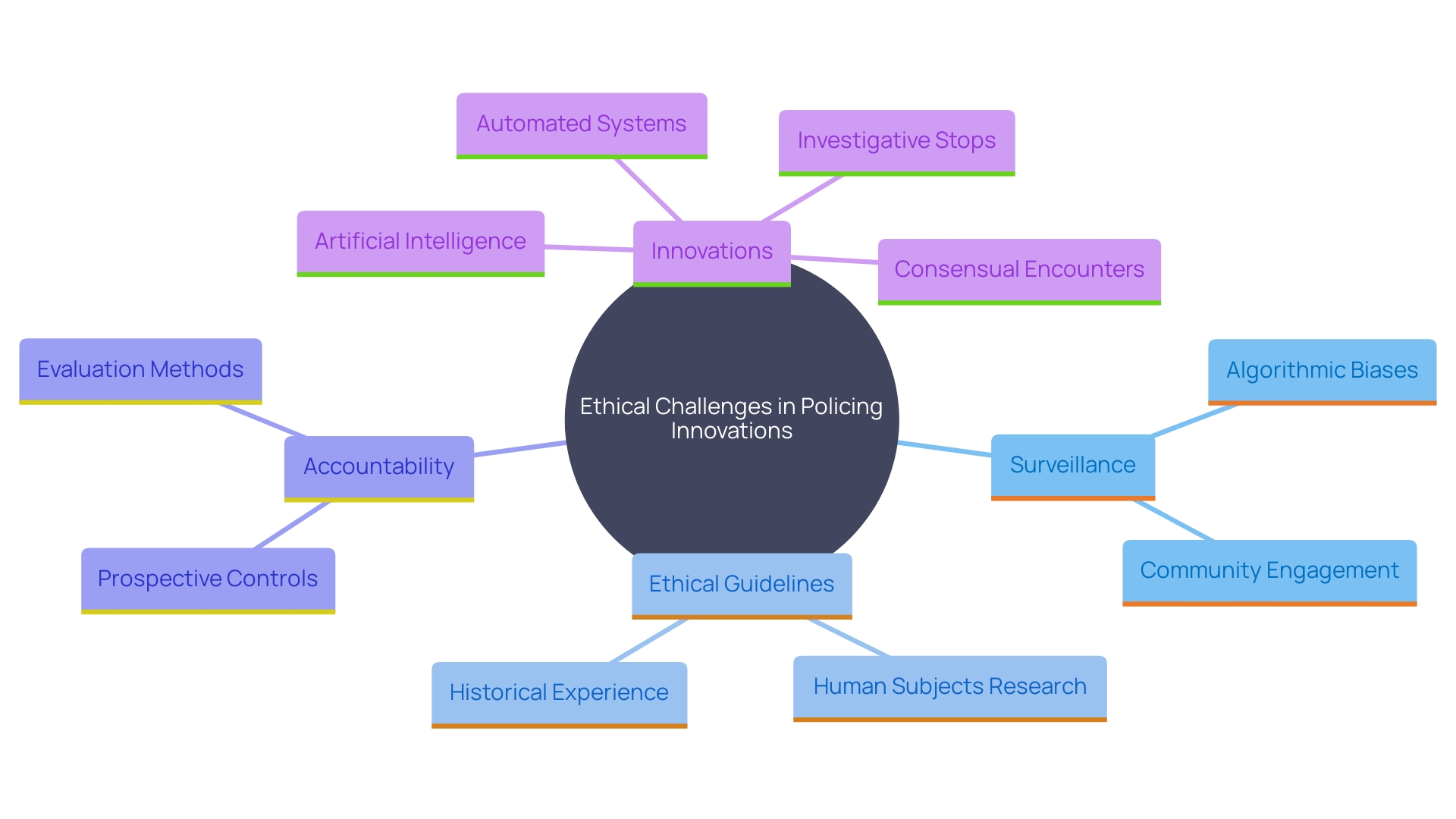
Evaluating the Effectiveness of PD Counter Technologies
Evaluating the effectiveness of PD counter measures involves analyzing various performance metrics, including crime statistics, response times, and community satisfaction. For example, a thorough study including more than 15 years of crime, calls for assistance, and police enforcement information assessed the ShotSpotter system in Chicago and Kansas City. This research, the most extensive of its type, employed a matched quasi-experiment to compare ShotSpotter-covered regions to similar control regions lacking the system. Results showed significant improvements; for example, in a 12-month pilot project in Durham, ShotSpotter more than doubled gunshot notifications and reduced median police response times by 1.2 minutes. Ongoing assessment and feedback cycles are essential for adjusting and improving the application of tools in policing, making certain it corresponds with the changing requirements of the community. As Brandon del Pozo of Brown University notes, the integration of evidence-based innovations into routine practice is crucial for the sustainable adoption of new technologies in police settings.
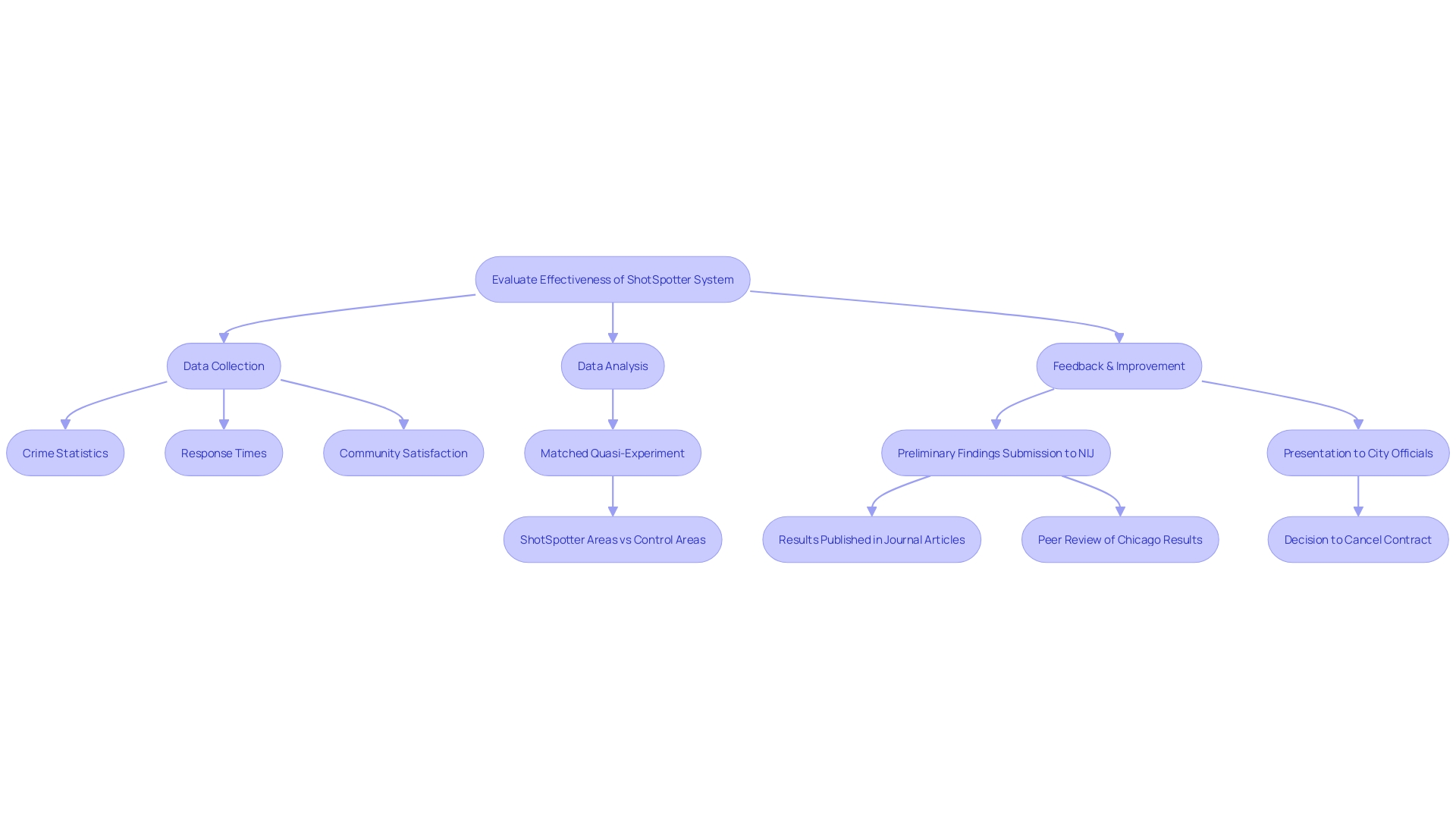
Conclusion
The integration of technology in law enforcement represents a pivotal shift in how policing is conducted, emphasizing the need for enhanced operational efficiency, data management, and public safety. Innovations such as predictive analytics, body-worn cameras, and advanced communication systems have not only transformed traditional policing strategies but also significantly improved accountability and transparency. By utilizing comprehensive methodologies to evaluate these technologies, law enforcement agencies can better understand their impact on community relations and operational effectiveness.
However, the adoption of these advanced technologies is not without its challenges. Budget constraints, personnel resistance, and ethical considerations surrounding data privacy and algorithmic biases must be addressed to foster public trust. Establishing robust governance frameworks and engaging communities in the conversation about technology deployment can mitigate potential risks and enhance the overall effectiveness of law enforcement initiatives.
Ultimately, the successful integration of technology in policing hinges on a commitment to ethical responsibility and transparency. By prioritizing community engagement and accountability, law enforcement agencies can navigate the complexities of modern policing while ensuring that public safety measures do not compromise individual rights. Embracing these principles will not only strengthen the relationship between law enforcement and the communities they serve but also pave the way for a more just and equitable society.

